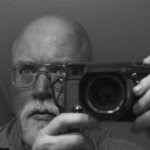Afga APX 400 in Panthermic 777
I tested Agfa APX 400 with some PMK Pyro a few weeks ago. The results were awful unless you are looking for salt and pepper grain or wanted to document the appearance of workers shoveling coal into the boiler of a ship. PMK Pyro usually masks grain fairly well, but with Agfa 400 it met its match. Since my other favorite developer is Panthermic (or Harvey’s) 777, I decided to give it a try with Agfa 400. TRI-X and 777 work extremely well together, giving rich tonality under what I consider to be rather bland shooting conditions. I was hoping that Agfa 400 and 777 might produce something spectacular.
Panthermic 777 is one of the least-documented developers I have ever used. I didn’t have a starting time for Agfa 400, so I guessed at about 10 minutes at 75F. The density of the resulting negatives was good, so 10 minutes at room temperature is a good ballpark developing time. This was the first time I have used 777 without first pouring it through a Melitta coffee filter. I won’t try that again. The negatives were covered with small flecks of crud, presumably the junk that floats around in 777 in the bottle. I recommend always giving the solution a quick filtering.
After scanning the negatives, I will have to admit that they are grainier than I expected, nearly as grainy as Agfa 400 in PMK Pyro. In a match between TRI-X and Agfa 400 in 777, TRI-X wins. I will probably have the local B&W lab develop my Agfa 400 from now on. They can make just about anything look good with XTOL.



<< Home